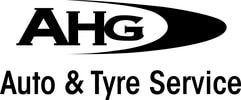Ford EcoSport Tire Pressures
The recommended tire pressure for the Ford EcoSport varies based on the tire size and specific model trims. Here are the recommended tire pressures based on the provided search results:
– For the base variants with 195 / 65 R15 tires and 205 / 60 R16 tires, the recommended tire pressure is between 30-35 PSI. 35 PSI can provide better fuel economy, while 30 PSI can offer a smoother and more comfortable ride.
– Another source mentions that the required tire pressure for the front tire is 30 PSI, and for the rear tire is 40 PSI. However, it’s important to note that the air pressure for EcoSport tires varies for loaded and unloaded vehicles.
– For the 2018 to 2021 models, the recommended tire pressure is 35-36 PSI for both front and rear tires, based on the model year, trim, and original equipment tire size.
It’s important to note that the tire pressure placard stuck on the vehicle is the most accurate listing of the tire pressures for the Ford EcoSport. If the placard is not available, the vehicle’s handbook should be consulted for the correct air pressure listing.
It’s advisable to refer to the specific tire pressure recommendations for your particular Ford EcoSport model and trim, as well as to consider the loaded or unloaded status of the vehicle for accurate tire pressure maintenance.
Contents
- What is the correct tire pressure for a Ford EcoSport?
- What is the proper tire pressure?
- What number is too high for tire pressure?
- What is the TYRE pressure indicator on the dashboard?
- What is the tire pressure for a 2014 Ford EcoSport?
- What is the front and rear TYRE pressure for Ford EcoSport?
- Is 40 PSI too high for tires?
- What is normal Ford tire pressure?
- What is considered bad tire pressure?
- What is the TYRE pressure warning light on a Ford EcoSport?
What is the correct tire pressure for a Ford EcoSport?
Ford EcoSport’s base variants which are 1.5P Ambiente MT and 1.5P Trend MT, use 195 / 65 R15 tyres while 1.5P Titanium MT and 1.5P Titanium AT uses 205 / 60 R16 tyres. For these tyres recommended tyre pressure is between 30-35 PSI.
What is the proper tire pressure?
between 28 and 36 PSI
Running your tires at the correct pressure is important because it keeps you safe, cuts down your gas bill, and makes your tires last longer. Each vehicle has its own specifications for tire pressure, but most fall between 28 and 36 PSI (pounds per square inch).
What number is too high for tire pressure?
For instance, if 35 psi is recommended, and the maximum safe pressure listed on your sidewall is 44 psi, you can safely put 38 or 40 psi in your tires. You can even go to 44 psi. You’ll experience a harder ride, but you won’t create a blowout danger. You may even experience sharper cornering and increased fuel economy.
What is the TYRE pressure indicator on the dashboard?
The purpose of the TPMS (Tire Pressure Monitoring System) is to alert you when tire pressure is too low and could create unsafe driving conditions. If the light is illuminated, it means your tires could be underinflated, which can lead to undue tire wear and possible tire failure.
What is the tire pressure for a 2014 Ford EcoSport?
Ford recommended tyre pressure is 30 for normal load and 35/40 for full load.
What is the front and rear TYRE pressure for Ford EcoSport?
What is the ideal Ford EcoSport tyre pressure? For the best performance, we recommend a tyre pressure of 30-35 PSI.
Is 40 PSI too high for tires?
For instance, if 35 psi is recommended, and the maximum safe pressure listed on your sidewall is 44 psi, you can safely put 38 or 40 psi in your tires. You can even go to 44 psi. You’ll experience a harder ride, but you won’t create a blowout danger. You may even experience sharper cornering and increased fuel economy.
What is normal Ford tire pressure?
For everyday driving in most models, Ford recommends a tire pressure of 35 psi for the front and rear tires. If your truck comes with the Heavy-Duty Payload Package, you should increase the pressure to 40 psi on the front and rear.
What is considered bad tire pressure?
Ideal Tire Pressure
Tire pressure between 32 to 35 PSI is most suitable for most vehicles. However, one can go as low as 20 PSI (although that is not recommended). Anything below 20 PSI is considered a flat tire. PSI stands for Pounds per Square Inch.
What is the TYRE pressure warning light on a Ford EcoSport?
The low tyre pressure warning light will turn on if the tyre pressure is significantly low. Once the light is illuminated, your tyres are under-inflated and need to be inflated to the manufacturer’s recommended tyre pressure.

